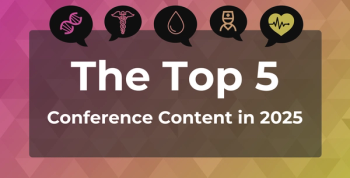
5 Things to Know Before a Breast Screening
Key Takeaways
- Understanding personal risk factors, including genetic and lifestyle influences, is crucial for selecting appropriate breast cancer screening methods.
- Lifestyle changes, such as maintaining a healthy weight and reducing alcohol intake, can significantly lower breast cancer risk.
Here are 5 key points for pre–breast screening preparation that cover the areas of risk assessment, lifestyle adjustments, understanding screening details, managing anxiety, and open provider communication.
There are many methods available for screening for breast cancer, with the most popular form being digital mammography.1 However, not all patients equally benefit from early detection through mammograms, and many need more extensive screening exams.2 It is important patients are aware of certain factors that may influence their choice of breast screening exam to further consider them prior to undergoing screening.
Here are the 5 things to know before a breast screening exam.
1. Knowledge of Risk
Regardless of genetic history of breast cancer, patients should be aware they could still be at risk for cancer development.3 Factors like female sex, age, race, and ethnicity can contribute to an elevated risk that cannot be altered, while lack of exercise, smoking, and consumption of certain foods are all factors that increase breast cancer risk but can be altered.
An estimated 5% to 10% of breast cancers are thought to be hereditary, and the rest rely on additional contributing factors. Weight, pregnancy history, breastfeeding history, menstrual history, alcohol use, smoking habits, lack of exercise, dense breast tissue, and use of hormone replacement therapy can all impact the risk of breast cancer.
Other factors include the history of breast cancer diagnosis, which can increase the risk of subsequent metastatic disease by 3 to 4 times. Radiation procedures to the chest or face before age 30 also present a higher-than-average risk of developing breast cancer.
It has become increasingly important for patients to identify their risks of developing breast cancer because they may benefit from different types of early screening methods. Patient education of their personal risks can help alter their lifestyle to decrease these risks and certain rumors of what leads to breast cancer, such as abortions, antiperspirants, and bras.
2. Lowering Risk
Genetic factors are uncontrollable, but certain lifestyle changes can be made to decrease the overall risk of breast cancer in a lifetime.4 Both obesity and metabolic syndrome have been found to increase breast cancer mortality risk; thus, maintaining a healthy weight, especially after menopause, can decrease these effects.5 Lowering risk of breast cancer also can be done through less alcohol consumption or consumption in moderation.4 Physical activity can decrease risks too, while contributing to the overall health of the patient.
Factors like breastfeeding can also attribute to decreased factors in breast cancer development, ovarian cancer, type 2 diabetes, and high blood pressure.3 Breastfeeding is recommended for a minimum of 6 months to a maximum of 2 years to reduce risk.
Hormone replacement therapies and oral contraceptives have been linked to increased risks of breast cancer, so eliminating their use could deter cancer development.4
3. Awareness of Benefits, Limitations, and Risks
Benefits of breast screening include the potential of early detection, reducing treatment and recovery times.6 Earlier cancer detection increases overall chances of survival.
Limitations of breast screening methods include the possibility of false positives or false negatives. Both outcomes can exacerbate health conditions of patients. False positives can lead to over diagnosis, unnecessary health care costs, and complications from unnecessary treatment, and false negatives are threatening because cancer can go undetected and potentially spread.
Knowledge of breast screening risks is helpful because this allows patients to recognize the additional steps that can be done to improve early detection.7 A study found only half of patients were aware of the impact dense breast tissue has on cancer risk but nearly 80% were aware of the outcome dense breasts could have on a mammogram screening.2 Further knowledge of screening risks gives patients the power to request alternative screening techniques while bearing greater understanding of what to expect and how to follow-up during the process.
4. Anxiety Preparation
Research has found any form of cancer screening can be anxiety–inducing, but often, the fear is greater than the possibility of a positive diagnosis.7 It may be helpful to remind that screenings reduce the risk of more invasive, extensive cancer. Shifting perspectives to compare the screening to another specialty can also reduce anxiety. For example, a patient returning to the dentist for their 6-month cleaning does not mean they have cavities or other issues but instead ensures the patient is healthy.
Typically, patients are fearful because they are unaware of what to expect when it comes to a mammogram. Physicians recommend a comfortable, 2-piece outfit and comfortable shoes since the screening only requires the top half of the body while patients stand for the brief duration.8 It is also suggested patients shower and bathe as normal but refrain from applying deodorants, powders, antiperspirants, perfumes, creams, lotions, or cosmetics to the breasts, chest, and underarm regions prior to screening.
It may also help patients to understand how the screening works. Patients are placed in front of a mammogram machine by a technologist who will assist in placing the breasts on the machine.9 The upper plastic plate will lower and compress each breast for 15 to 20 seconds as an X-ray is done. The only differences for a 3D mammogram are the machine moves in a small arc shape over the top of the breast and along the side of the breast. In some cases, patients may be asked to hold their breath each time the breast is screened. Breast compressions can be painful, but this is temporary, and technologists may be able to adjust compressions to patient comfort if requested.
5. Patient/Physician Discussions
Although physicians should be delivering patients as much information as possible on breast screening, patients should also ask questions regarding the procedure and voice their concerns. The more often there can be discussions on breast screening, the less uncertainty, stigma, and discomfort may follow.10 Consistent communications are vital in fostering a setting where patients are less hesitant to speak up, allowing room for further growth and change.
Many people are unaware of the basic facts of breast cancer and continuous fear can prevent them from learning more. It is important for physicians to emphasize to their patients that breast cancer is treatable when detected early, it can happen to anyone at any age, and self-exams are critical for early detection methods.
Some questions patients may want to consider asking their doctors11:
- Do I have any risk factors that increase my chances of getting breast cancer? If so, do I need to be screened earlier or more often?
- How long will it take to get the results of my mammogram?
- Is there anything I can do to lower my risk of breast cancer?
- What are the benefits and risks of getting a mammogram? What does this mean for me?
- What other screening options are there aside from a mammogram?
Early detection through screenings remains a valuable tool, and it is essential to be aware of the potential benefits, limitations, and risks associated with different screening methods. By having open conversations with health care providers and understanding personal risk factors, individuals can make informed choices about their breast health and take proactive steps toward prevention and early detection.
References
1. Rosenqvist S, Brännmark J, Dustler M. Digital breast tomosynthesis in breast cancer screening: an ethical perspective. Insights into Imaging. 2024;15(1). doi:10.1186/s13244-024-01790-w
2. Santoro C. Celebrating World Dense Breast Day: raising awareness and advocacy of dense breasts. The American Journal of Managed Care®. September 23, 2024. Accessed October 7, 2024.
3. Breast cancer risk factors. Breastcancer.org. July 19, 2024. Accessed October 7, 2024.
4. Reducing risk for breast cancer. CDC. May 13, 2024. Accessed October 7, 2024.
5. Metabolic syndrome, obesity contribute to breast cancer mortality in postmenopausal women. AJMC. May 13, 2024. Accessed October 7, 2024.
6. Lee S. Benefits and limitations of screening for breast cancer. Canadian Cancer Society. 20214. Accessed October 7, 2024.
7. Alexander H. 8 ways to cope with fear during the screening process. MD Anderson Cancer Center. November 2018. Accessed October 7, 2024.
8. How to prepare for a mammogram. National Breast Cancer Foundation. August 25, 2023. Accessed October 7, 2024.
9. How to prepare for a mammogram. American Cancer Society. January 14, 2022. Accessed October 7, 2024.
10. Don’t overcomplicate it: 3 easy steps to talk about breast health. National Breast Cancer Foundation. May 6, 2022. Accessed October 9, 2024.
11. Mammograms: questions for the doctor. My Health finder. May 29, 2024. Accessed October 9, 2024.
Newsletter
Stay ahead of policy, cost, and value—subscribe to AJMC for expert insights at the intersection of clinical care and health economics.









































